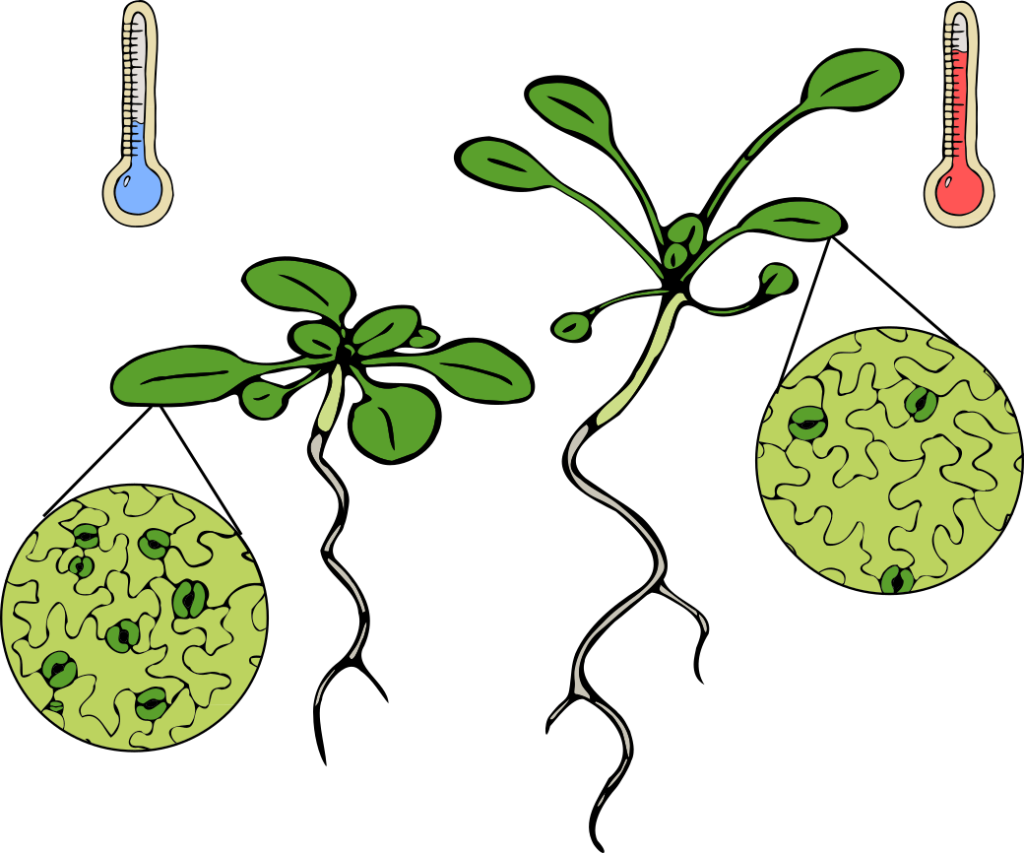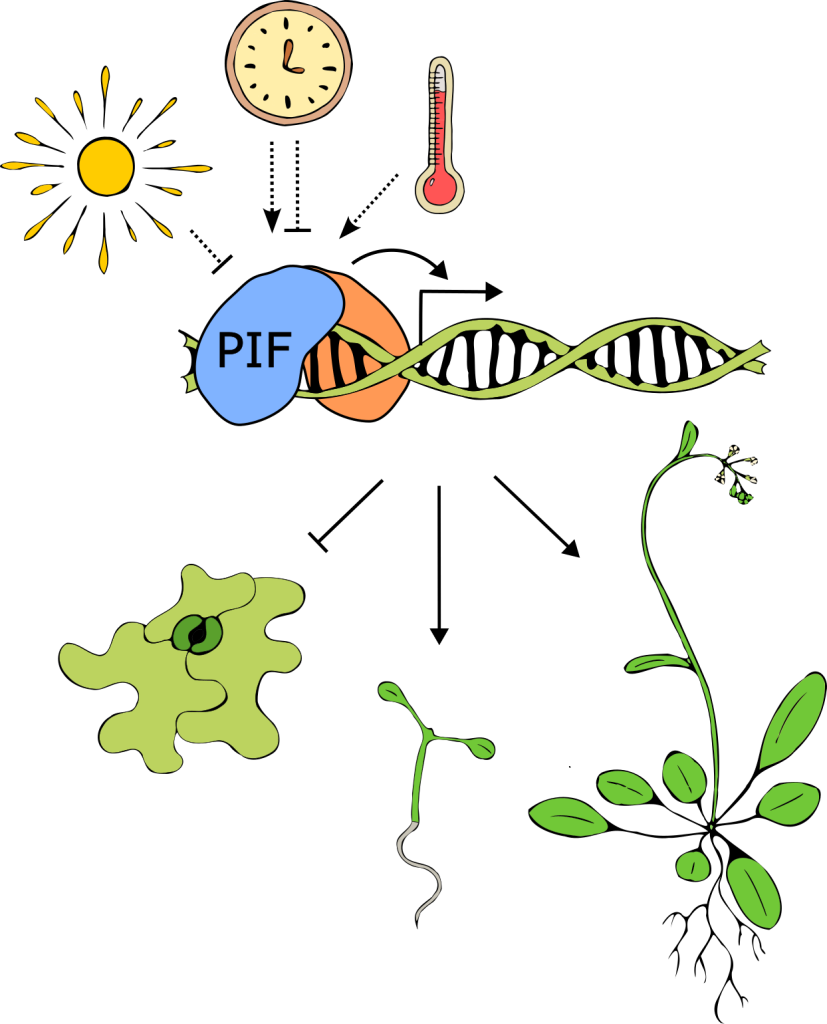Plants display a remarkable degree of developmental plasticity: they constantly adjust their growth and morphology in response to their surroundings to maximise fitness and reproductive success. Temperature is arguably one of the most influential factors impacting plant fitness as it affects the rate of every physical and biochemical reaction; it is therefore of vital importance for the plant to be able to sense its temperature environment. With the progression of climate change, plants in temperate regions such as the UK are challenged by more frequent heat waves as well as an overall rise in temperature, and these effects already impact crop production: in wheat and barley, each 1 °C increase above optimal growth temperature is estimated to reduce crop yield by 5-6%. Gaining a deeper understanding of how plants perceive temperature cues and translate them into appropriate developmental and physiological responses is thus a central question in both fundamental plant science and agriculture.
We mainly use the model plant Arabidopsis thaliana to understand the fundamental processes of plant temperature signalling. In Arabidopsis, prolonged exposure to warm temperatures triggers a set of developmental responses that we collectively refer to as thermomorphogenesis: plants show increased elongation growth of the hypocotyl (embryonic stem). petioles and primary root, an upward bending of the leaves, reduced formation of stomata (microscopic pores for gas exchange and evaporation) as well as accelerated flowering and seed set. In addition to Arabidopsis, we are also also looking to translate some of our research into barley, one of the UK’s staple crops, whose development and yield are highly sensitive to ambient temperature.


Our main aim is to understand how warm temperatures affect gene expression – particularly at the level of transcription and translation – and how these changes in gene expression result in developmental changes that help plants to increase fitness and reproductive success in a challenging temperature environment. Transcription factors of the PHYTOCHROME INTERACTING FACTOR (PIF) family are key regulators of environmentally controlled gene expression: they integrate external signals such as light and temperature as well as intrinsic signals from the circadian clock to alter gene expression profiles to control developmental outputs such as elongation growth, stomata formation and the transition to flowering. We use a combination of genetics, molecular biology, biochemistry and omics approaches to understand the function of PIFs and other regulators of gene expression in the warm temperature response, addressing three main questions:
- What are the molecular mechansisms through which ambient temperature affects the function of PIFs and other regulators of temperature-dependent gene expression?
- How are changes in gene expression downstream of these regulators coordinated in space and time?
- Can we harness these temperature signalling mechanisms to render plants more resilient to a changing climate?